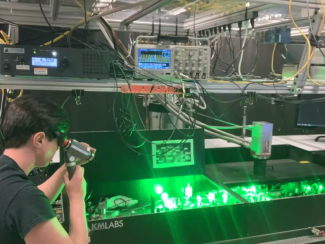In a pioneering study, researchers from JILA and the University of Colorado Boulder physics department have made significant strides in understanding electron spin dynamics within metals. The feature article in Laser Focus World highlights their work on high-harmonic generation (HHG) light probes and their use in revealing spin dynamics within a Heusler compound.
The research, led by JILA Fellow and CU Boulder Professors Margaret Murnane and Henry Kapteyn, focused on the compound Co2MnGa, which exhibits unique magnetic properties. By employing extreme ultraviolet HHG as a light probe, the team successfully tracked electron spin changes within the compound with remarkable femtosecond precision. This level of detail is crucial for advancing our understanding of quantum mechanics and its applications in modern electronics and data storage.
JILA graduate student Sinéad A. Ryan played a key role in this research. She utilized pulsed femtosecond lasers and EUV HHG to measure and manipulate the spin dynamics within the compound. Ryan's work involved tuning the probe light across the magnetic resonances of cobalt and manganese in the compound, providing new insights into their specific magnetic behaviors.
The JILA team collaborated internationally with researchers from Sweden, Greece, and Germany to combine experimental results with extensive theoretical analysis. This collaboration has led to a better understanding of spin transfers between elements in magnetic alloys and the potential for creating more powerful magnetic and electronic materials.
This work signifies a major step forward in the field of spintronics and the development of ultrafast magnetic and electronic devices. The JILA team's findings not only expand our knowledge of quantum mechanics but also open new avenues for the practical application of these principles in technology.
Written by Kenna Hughes-Castleberry, JILA Science Communicator





